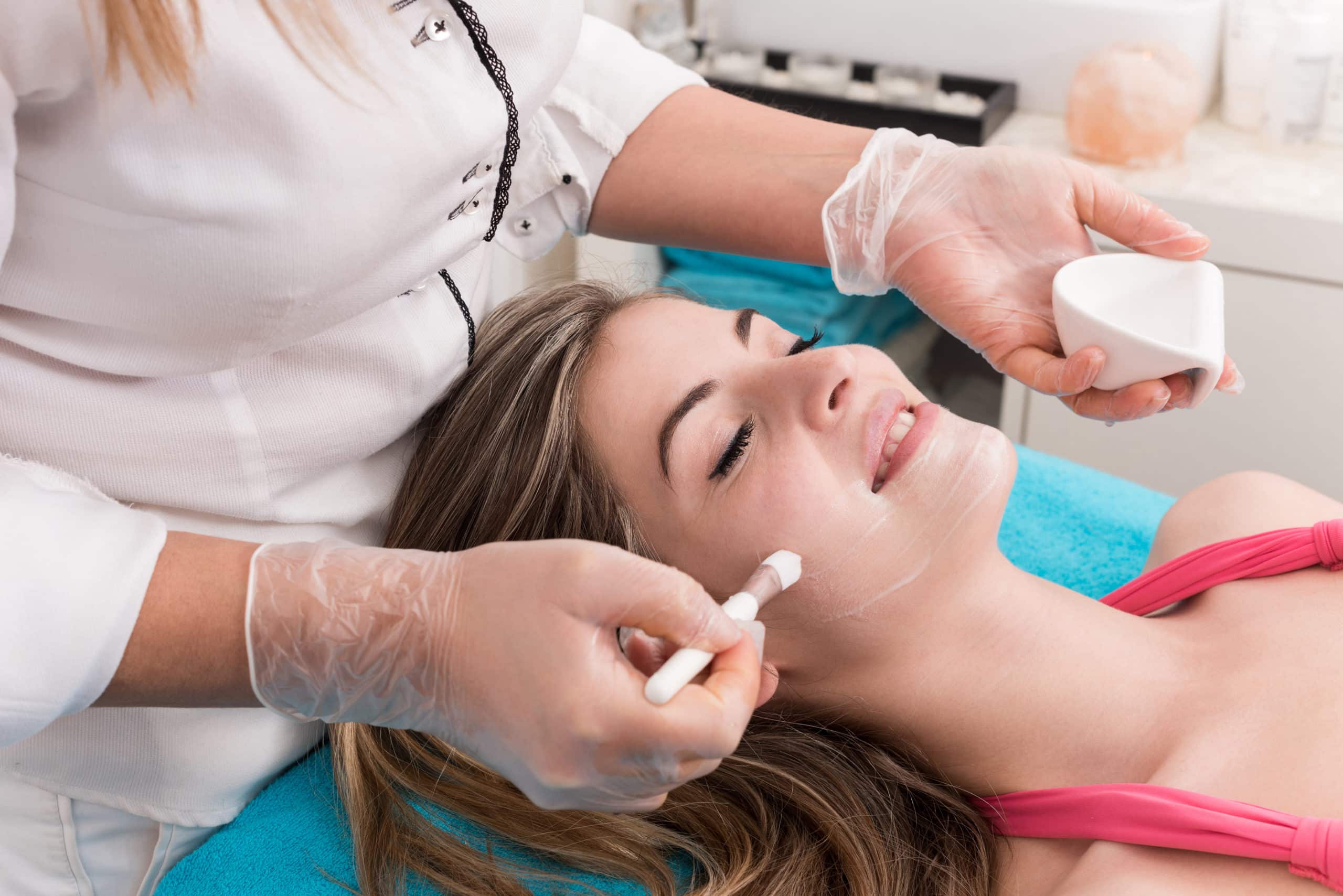With A Warm, Caring Staff and Stunningly Natural Results,
Our Approach to Surgery is Anything but Plastic
Chemical peels are a popular procedure for several skin concerns, but choosing the best option for you can be confusing without guidance from a skin care professional. Choosing the right chemical peel requires understanding how the treatment works, what your skin type and needs are, and what types of chemical peels are available.
How Do Chemical Peels Work?
Chemical peels work by exfoliating dead skin cells away using acids. They affect the epidermis and the dermis layers of the skin, which are the outermost layer and the layer that lies just beneath. When applying a chemical peel, your aesthetician or plastic surgeon will ensure that a uniform and controlled amount of dead skin cells is removed, resulting in more even, youthful-looking skin.
Who is a Candidate for a Chemical Peel?
Chemical peels can be chosen to treat several common skin conditions. These include aging signs like fine lines, wrinkles, or mild to moderate sagging as well as other concerns with irregular pigmentation or texture like enlarged pores, acne, scarring, rosacea, or hyperpigmentation. During a consultation, your aesthetician will evaluate your skin concerns and skin type to determine whether a chemical peel is your best option and then select the type of chemical peel that will be best for you.
What Types of Chemical Peels are Available?
There are three basic types of chemical peels: superficial, medium, and deep peels. A superficial peel will affect only the top layer of the skin, or epidermis. These peels are intended to treat minor issues like acne or enlarged pores and have reduced risks of side effects. Medium-depth peels are best for issues like fine lines, sun damage, or minor scarring. These peels can cause swelling that lasts up to 48 hours and will require about 10-14 days of healing time. Deep chemical peels are chosen for patients who want dramatic results and are treating issues like more severe wrinkles, sagging skin, or severe hyperpigmentation. Healing after a deep chemical peel can take up to 21 days and will require patients to avoid sun exposure for 3-6 months.
Chemical peels utilize various types of acids, which can include ingredients like alpha-hydroxy acids, beta-hydroxy acids, trichloroacetic acid, or phenol. The type of acid used will typically determine the strength or depth of the peel.
CARE Plastic Surgery offers two types of peels: a micropeel and the SkinCeuticals Advanced Corrective Peel.
Micropeel
CARE Plastic Surgery’s micropeel is a very light chemical peel. During this treatment, either an alpha-hydroxy acid (such as glycolic, lactic, or citric acid) or beta-hydroxy acid (such as salicylic acid) will be applied to the skin for a brief time. This causes a fine layer of dead skin cells and debris to be exfoliated away from the skin’s surface. The micropeel requires no downtime and is a great option for surface issues like fine lines or acne.
SkinCeuticals Advanced Corrective Peel
SkinCeuticals Advanced Corrective Peel is a professional-grade chemical peel that uses a combination of salicylic acid, lactic acid, and phenylethyl resorcinol. This treatment is a great option for issues like discoloration, wrinkles, unwanted texture, or enlarged pores. It is considered a light chemical peel and requires little downtime. Most patients will see some peeling or crusting of the skin after this peel, but this should subside within a day or two.
Schedule a Consultation
To learn more about your chemical peel options, schedule a consultation at CARE Plastic Surgery. Call our office at (919) 335-9298 or contact us online.
Return to Overview


